
Rabbit Anti-HIF-1 Alpha antibody
ARNT interacting protein; ARNT-interacting protein; Basic helix loop helix PAS protein MOP1; Basic-helix-loop-helix-PAS protein MOP1; bHLHe78; Class E basic helix-loop-helix protein 78; HIF 1A; HIF 1alpha; HIF-1-alpha; HIF1 A; HIF1 Alpha; HIF1; HIF1-alpha
View History [Clear]
Details
Product Name HIF-1 Alpha Chinese Name 缺氧诱导因子1α /低氧诱导因子-1抗体 Alias ARNT interacting protein; ARNT-interacting protein; Basic helix loop helix PAS protein MOP1; Basic-helix-loop-helix-PAS protein MOP1; bHLHe78; Class E basic helix-loop-helix protein 78; HIF 1A; HIF 1alpha; HIF-1-alpha; HIF1 A; HIF1 Alpha; HIF1; HIF1-alpha; HIF1A; HIF1A_HUMAN; Hypoxia inducible factor 1 alpha; Hypoxia inducible factor 1 alpha isoform I.3; Hypoxia inducible factor 1 alpha subunit; Hypoxia inducible factor 1 alpha subunit basic helix loop helix transcription factor; Hypoxia inducible factor 1, alpha subunit (basic helix loop helix transcription factor); Hypoxia inducible factor1alpha; Hypoxia-inducible factor 1-alpha; Hypoxia-inducible factor-1a; Member of PAS protein 1; Member of PAS superfamily 1; Member of the PAS Superfamily 1; MOP 1; MOP1; PAS domain-containing protein 8; PASD 8; PASD8. HIF-1a; HIF-1α; literatures Research Area Tumour Cell biology Neurobiology Signal transduction Apoptosis Immunogen Species Rabbit Clonality Polyclonal React Species Human, Rat, (predicted: Mouse, Dog, Pig, Cow, Rabbit, ) Applications WB=1:500-2000 ELISA=1:5000-10000 IHC-P=1:100-500 IHC-F=1:100-500 Flow-Cyt=1μg/Test ICC=1:100 IF=1:100-500 (Paraffin sections need antigen repair)
not yet tested in other applications.
optimal dilutions/concentrations should be determined by the end user.Theoretical molecular weight 92kDa Cellular localization The nucleus cytoplasmic Form Liquid Concentration 1mg/ml immunogen KLH conjugated synthetic peptide derived from middle of human HIF-1 Alpha: 341-450/826 Lsotype IgG Purification affinity purified by Protein A Buffer Solution 0.01M TBS(pH7.4) with 1% BSA, 0.03% Proclin300 and 50% Glycerol. Storage Shipped at 4℃. Store at -20 °C for one year. Avoid repeated freeze/thaw cycles. Attention This product as supplied is intended for research use only, not for use in human, therapeutic or diagnostic applications. PubMed PubMed Product Detail Hypoxia-inducible factor-1 (HIF1) is a transcription factor found in mammalian cells cultured under reduced oxygen tension that plays an essential role in cellular and systemic homeostatic responses to hypoxia. HIF1 is a heterodimer composed of an alpha subunit and a beta subunit. The beta subunit has been identified as the aryl hydrocarbon receptor nuclear translocator(ARNT). This gene encodes the alpha subunit of HIF-1. Overexpression of a natural antisense transcript (aHIF) of this gene has been shown to be associated with nonpapillary renal carcinomas. Two alternative transcripts encoding different isoforms have been identified.
Function:
Functions as a master transcriptional regulator of theadaptive response to hypoxia. Under hypoxic conditions activatesthe transcription of over 40 genes, including, erythropoietin,glucose transporters, glycolytic enzymes, vascular endothelialgrowth factor, and other genes whose protein products increaseoxygen delivery or facilitate metabolic adaptation to hypoxia.Plays an essential role in embryonic vascularization, tumorangiogenesis and pathophysiology of ischemic disease. Binds to coreDNA sequence 5'-[AG]CGTG-3' within the hypoxia response element(HRE) of target gene promoters. Activation requires recruitment oftranscriptional coactivators such as CREBPB and EP300. Activity isenhanced by interaction with both, NCOA1 or NCOA2. Interaction withredox regulatory protein APEX seems to activate CTAD andpotentiates activation by NCOA1 and CREBBP.
Subunit:
Interacts with COPS5 subunit of COP9 signalosome complex,leading to the regulation of its stability. Interacts with TSGA10(By similarity). Efficient DNA binding requires heterodimerizationof an alpha and a beta/ARNT subunit. Binds to the TAZ-type 1domains of CREBBP and EP300. Interacts with NCOA1, NCOA2, APEX andHSP90. Interacts with VHL which docks HFA1 to the E3 ubiquitinligase complex for subsequent destruction. Interaction, via the ODDdomain, with the beta domain of VHLL, protects HIF1A fromdestruction by competing against the destructive targetinginitiated by VHL.
Subcellular Location:
Cytoplasm. Nucleus.
Tissue Specificity:
Expressed in most tissues with highest levels in kidney and heart. Overexpressed in the majority of common human cancers and their metastases, due to the presence of intratumoral hypoxia and as a result of mutations in genes encoding oncoproteins and tumor suppressors.
Post-translational modifications:
In normoxia, is hydroxylated on Pro-402 and Pro-564 in theoxygen-dependent degradation domain (ODD) by EGLN1/PHD1 andEGLN2/PHD2. EGLN3/PHD3 has also been shown to hydroxylate Pro-564.The hydroxylated prolines promote interaction with VHL, initiatingrapid ubiquitination and subsequent proteasomal degradation. Underhypoxia, proline hydroxylation is impaired and ubiquitination isattenuated, resulting in stabilization.
In normoxia, is hydroxylated on Asn-803 by HIF1AN, thusabrogating interaction with CREBBP and EP300 and preventingtranscriptional activation.
S-nitrosylation of Cys-800 may be responsible for increasedrecruitment of p300 coactivator necessary for transcriptionalactivity of HIF-1 complex.
Acetylation of Lys-532 by ARD1 increases interaction with VHLand stimulates subsequent proteasomal degradation.
Requires phosphorylation for DNA-binding.
Similarity:
Contains 1 basic helix-loop-helix (bHLH) domain.
Contains 1 PAC (PAS-associated C-terminal) domain.
Contains 2 PAS (PER-ARNT-SIM) domains.
SWISS:
Q16665
Gene ID:
3091
Database links:Entrez Gene: 3091 Human
Entrez Gene: 15251 Mouse
Omim: 603348 Human
SwissProt: Q16665 Human
SwissProt: Q61221 Mouse
Unigene: 597216 Human
Unigene: 3879 Mouse
Unigene: 446610 Mouse
缺氧诱导因子1α不仅对于机体在缺氧条件下维持正常的生理功能具有特别重要的意义,并在Tumour的生长以及神经Apoptosis等病理过程中起重要作用. HIF1 alpha能调节许多下游基因的表达水平.
哺乳动物细胞在低氧压力条件下出现HIF。HIF是一种转录因子,对细胞的缺氧起稳定作用。Product Picture
Lane 1: U87MG (Human) Cell Lysate at 30 ug
Lane 2: Hela (Human) Cell Lysate at 30 ug
Lane 3: A431 (Human) Cell Lysate at 30 ug
Lane 4: U251 (Human) Cell Lysate at 30 ug
Primary: Anti-HIF-1 Alpha (SL0737R) at 1/1000 dilution
Secondary: IRDye800CW Goat Anti-Rabbit IgG at 1/20000 dilution
Predicted band size: 92 kD
Observed band size: 120 kD
Sample:
Lane 1: Hela (Human) Cell Lysate at 30 ug
Lane 2: A431 (Human) Cell Lysate at 30 ug
Lane 3: U251 (Human) Cell Lysate at 30 ug
Lane 4: HepG2 (Human) Cell Lysate at 30 ug
Primary: Anti-HIF-1 Alpha (SL0737R) at 1/1000 dilution
Secondary: IRDye800CW Goat Anti-Rabbit IgG at 1/20000 dilution
Predicted band size: 92 kD
Observed band size: 120 kD
Paraformaldehyde-fixed, paraffin embedded (rat kidney); Antigen retrieval by boiling in sodium citrate buffer (pH6.0) for 15min; Block endogenous peroxidase by 3% hydrogen peroxide for 20 minutes; Blocking buffer (normal goat serum) at 37°C for 30min; Antibody incubation with (HIF-1 Alpha) Polyclonal Antibody, Unconjugated (SL0737R) at 1:200 overnight at 4°C, followed by operating according to SP Kit(Rabbit) (sp-0023) instructionsand DAB staining.Paraformaldehyde-fixed, paraffin embedded (rat stomach); Antigen retrieval by boiling in sodium citrate buffer (pH6.0) for 15min; Block endogenous peroxidase by 3% hydrogen peroxide for 20 minutes; Blocking buffer (normal goat serum) at 37°C for 30min; Antibody incubation with (HIF-1 Alpha) Polyclonal Antibody, Unconjugated (SL0737R ) at 1:200 overnight at 4°C, followed by operating according to SP Kit(Rabbit) (sp-0023) instructionsand DAB staining.Tissue/cell: human cervical carcinoma; 4% Paraformaldehyde-fixed and paraffin-embedded;
Antigen retrieval: citrate buffer ( 0.01M, pH 6.0 ), Boiling bathing for 15min; Block endogenous peroxidase by 3% Hydrogen peroxide for 30min; Blocking buffer (normal goat serum,C-0005) at 37℃ for 20 min;
Incubation: Anti-HIF-1-Alpha Polyclonal Antibody, Unconjugated(SL0737R) 1:300, overnight at 4°C, followed by conjugation to the secondary antibody(SP-0023) and DAB(C-0010) staining
Tissue/cell: rat lung tissue(Smoking); 4% Paraformaldehyde-fixed and paraffin-embedded;
Antigen retrieval: citrate buffer ( 0.01M, pH 6.0 ), Boiling bathing for 15min; Block endogenous peroxidase by 3% Hydrogen peroxide for 30min; Blocking buffer (normal goat serum,C-0005) at 37℃ for 20 min;
Incubation: Anti-HIF-1-Alpha Polyclonal Antibody, Unconjugated(SL0737R) 1:200, overnight at 4°C, followed by conjugation to the secondary antibody(SP-0023) and DAB(C-0010) staining
Hela cell; 4% Paraformaldehyde-fixed; Triton X-100 at room temperature for 20 min; Blocking buffer (normal goat serum, C-0005) at 37°C for 20 min; Antibody incubation with (HIF-1 Alpha) polyclonal Antibody, Unconjugated (SL0737R) 1:100, 90 minutes at 37°C; followed by a conjugated Goat Anti-Rabbit IgG antibody at 37°C for 90 minutes, DAPI (blue, C02-04002) was used to stain the cell nuclei.Hela cell; 4% Paraformaldehyde-fixed; Triton X-100 at room temperature for 20 min; Blocking buffer (normal goat serum, C-0005) at 37°C for 20 min; Antibody incubation with (HIF-1 Alpha) polyclonal Antibody, Unconjugated (SL0737R) 1:100, 90 minutes at 37°C; followed by a conjugated Goat Anti-Rabbit IgG antibody at 37°C for 90 minutes, DAPI (blue, C02-04002) was used to stain the cell nuclei.Hela cell; 4% Paraformaldehyde-fixed; Triton X-100 at room temperature for 20 min; Blocking buffer (normal goat serum, C-0005) at 37°C for 20 min; Antibody incubation with (HIF-1 Alpha) polyclonal Antibody, Unconjugated (SL0737R) 1:100, 90 minutes at 37°C; followed by a conjugated Goat Anti-Rabbit IgG antibody at 37°C for 90 minutes, DAPI (blue, C02-04002) was used to stain the cell nuclei.Blank control (blue line): Hela (blue).
Primary Antibody (green line): Rabbit Anti- HIF-1 Alpha antibody (SL0737R)
Dilution: 1μg /10^6 cells;
Isotype Control Antibody (orange line): Rabbit IgG .
Secondary Antibody (white blue line): Goat anti-rabbit IgG-FITC
Dilution: 1μg /test.
Protocol
The cells were fixed with 80% methanol (5 min at -20℃) and then permeabilized with 0.1% PBS-Tween for 20 min at room temperature. Cells stained with Primary Antibody for 30 min at room temperature. The cells were then incubated in 1 X PBS/2%BSA/10% goat serum to block non-specific protein-protein interactions followed by the antibody for 15 min at room temperature. The secondary antibody used for 40 min at room temperature. Acquisition of 20,000 events was performed.Blank control:Mouse spleen.
Primary Antibody (green line): Rabbit Anti-HIF-1 Alpha antibody (SL0737R)
Dilution: 2μg /10^6 cells;
Isotype Control Antibody (orange line): Rabbit IgG .
Secondary Antibody : Goat anti-rabbit IgG-FITC
Dilution: 1μg /test.
Protocol
The cells were fixed with 4% PFA (10min at room temperature)and then permeabilized with 90% ice-cold methanol for 20 min at -20℃. The cells were then incubated in 5%BSA to block non-specific protein-protein interactions for 30 min at room temperature .Cells stained with Primary Antibody for 30 min at room temperature. The secondary antibody used for 40 min at room temperature. Acquisition of 20,000 events was performed.
Bought notes(bought amounts latest0)
No one bought this product
User Comment(Total0User Comment Num)
- No comment
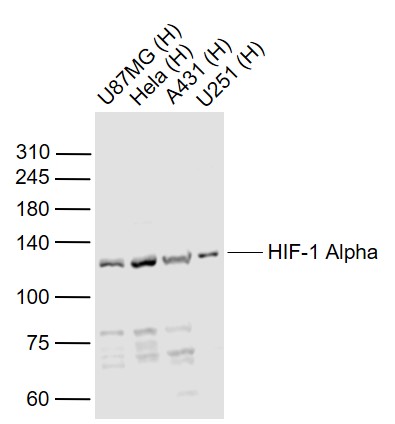
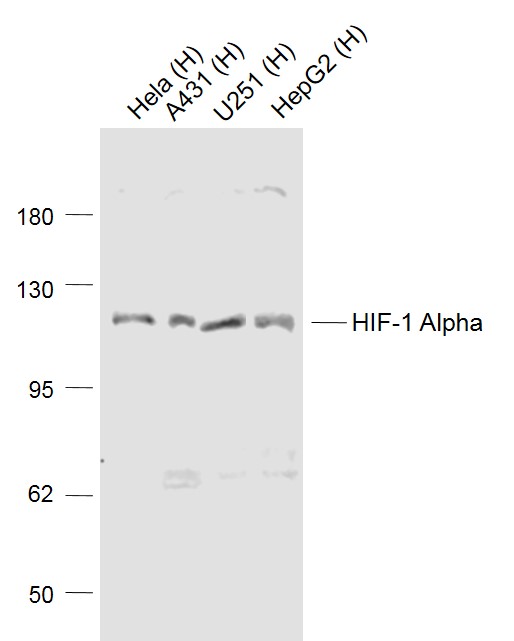
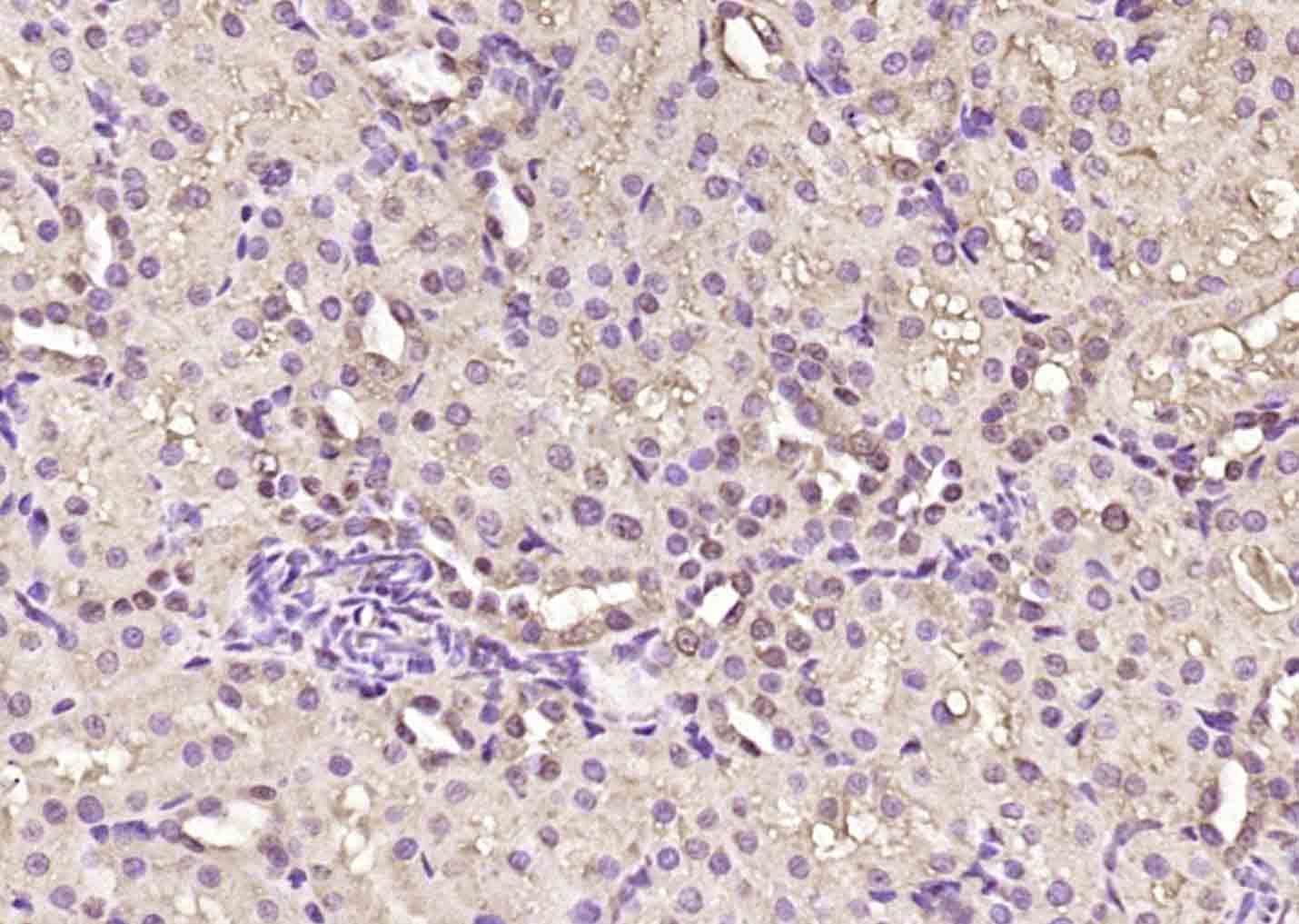
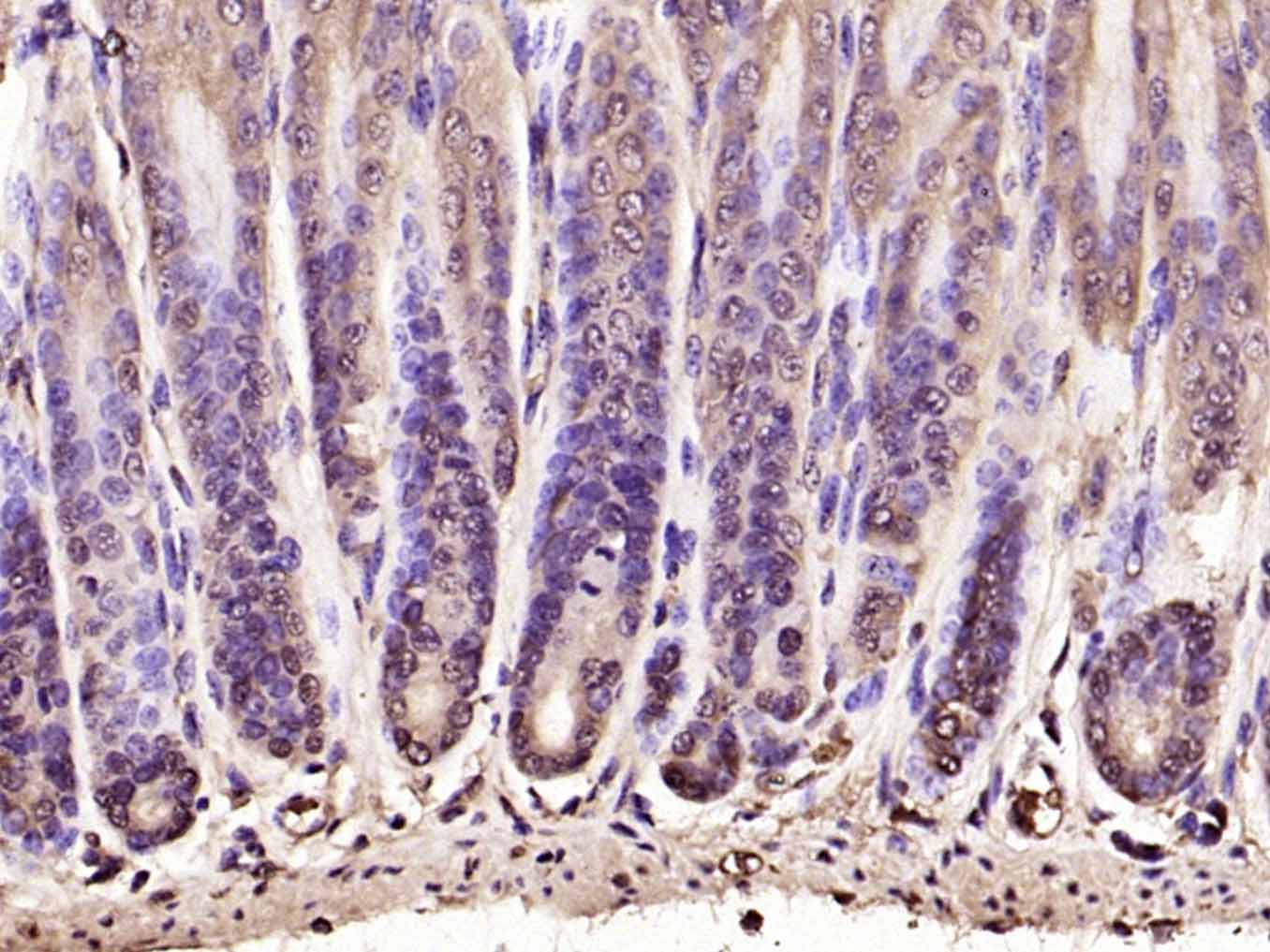
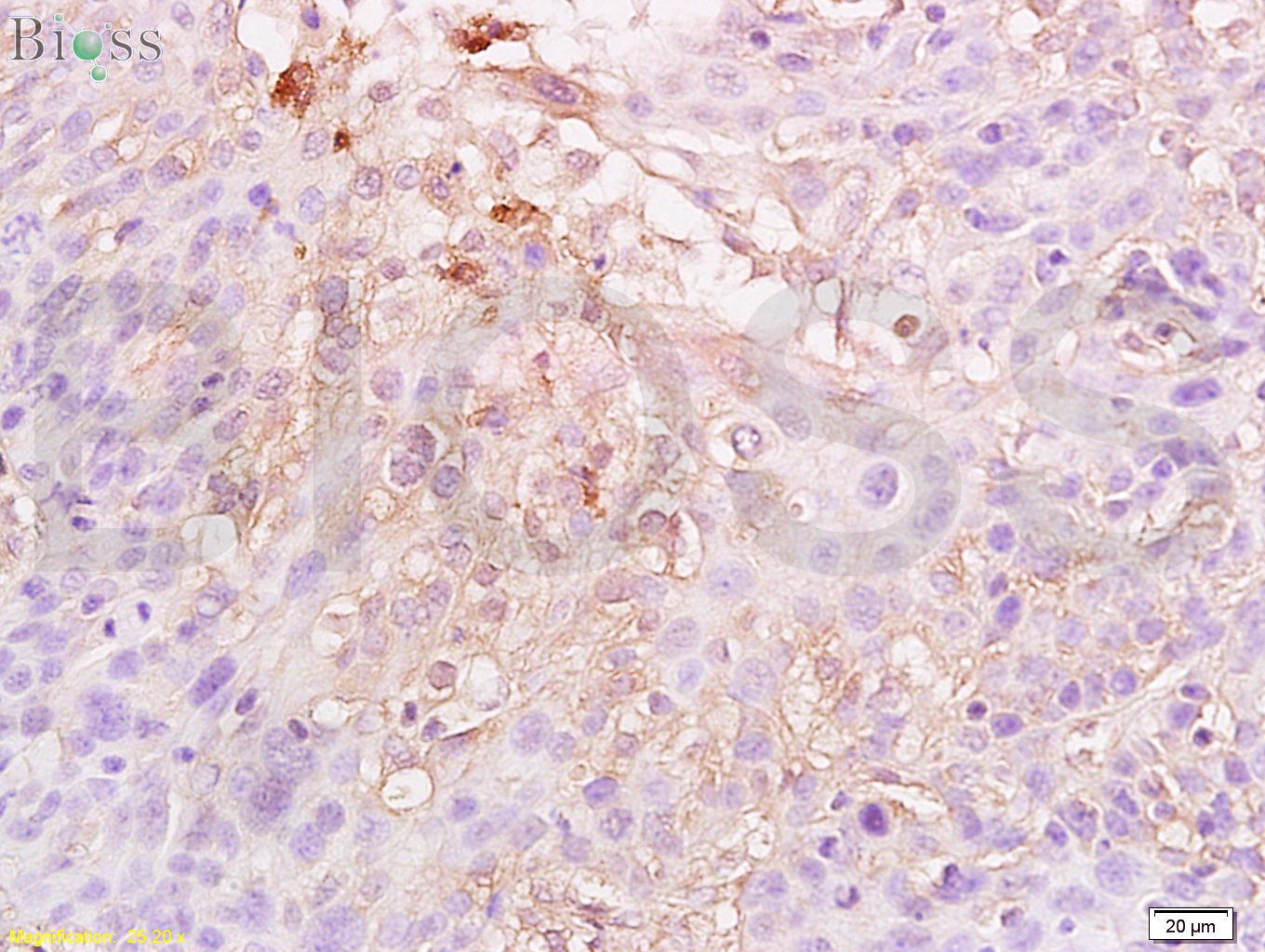
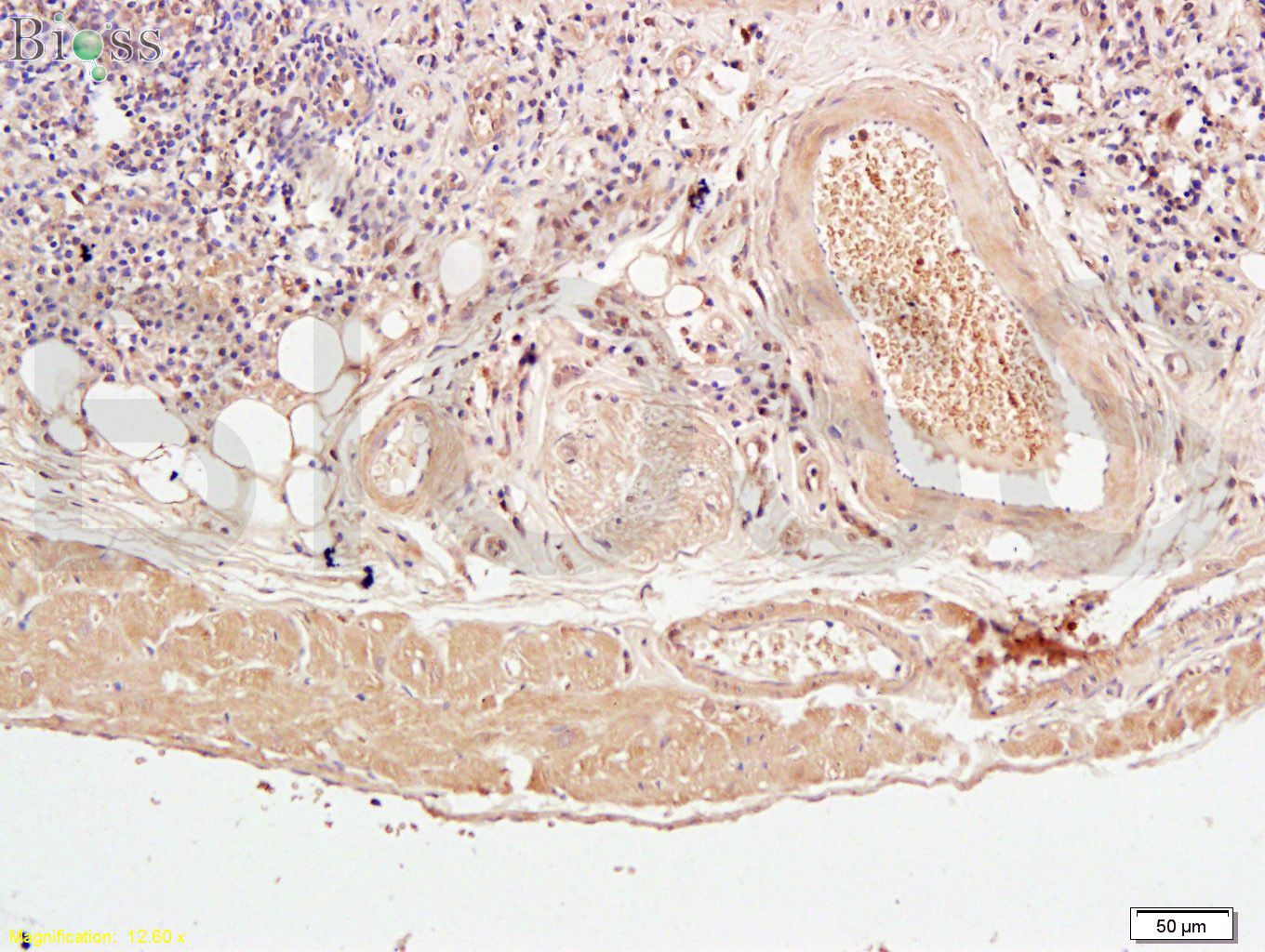
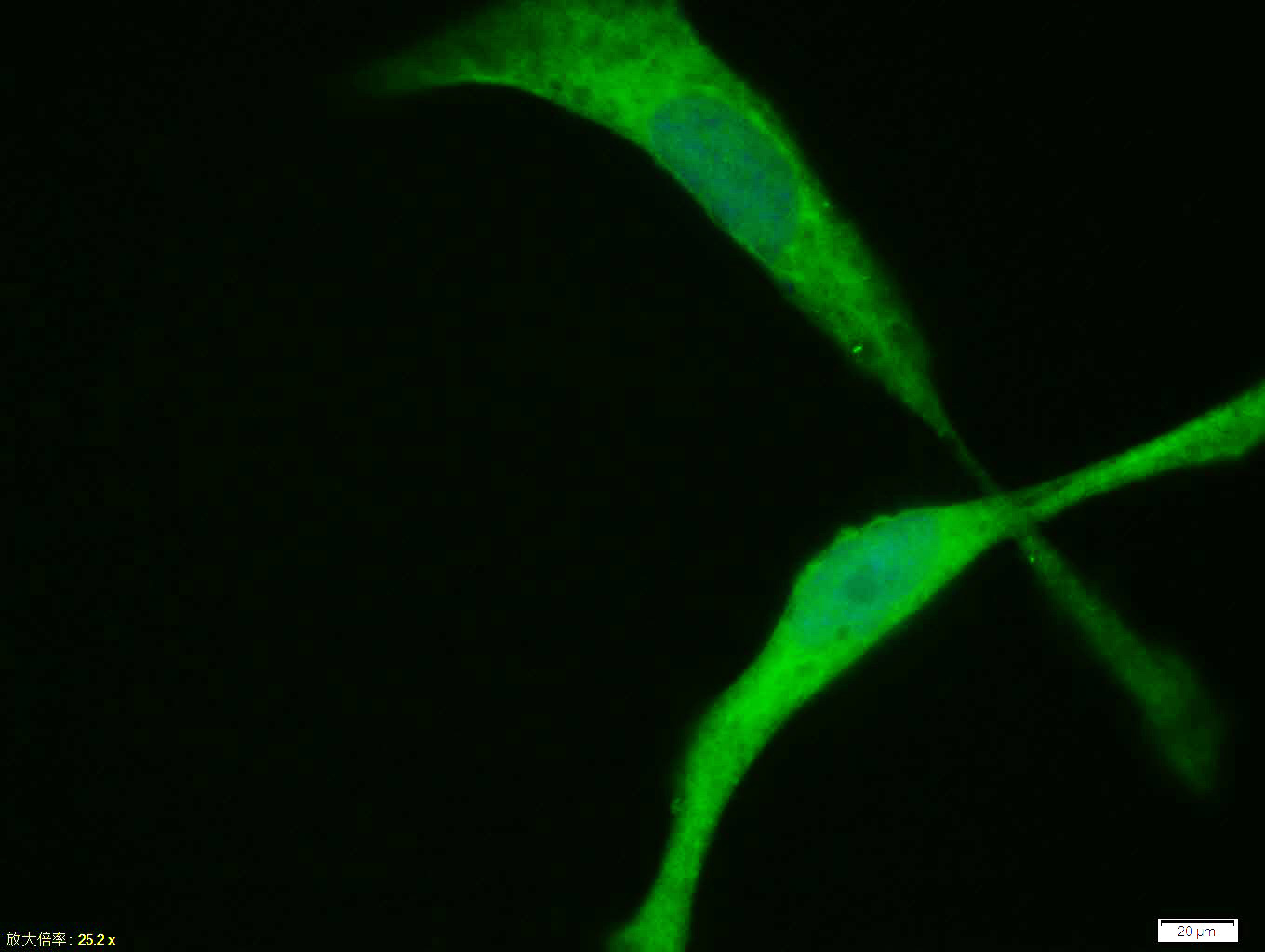
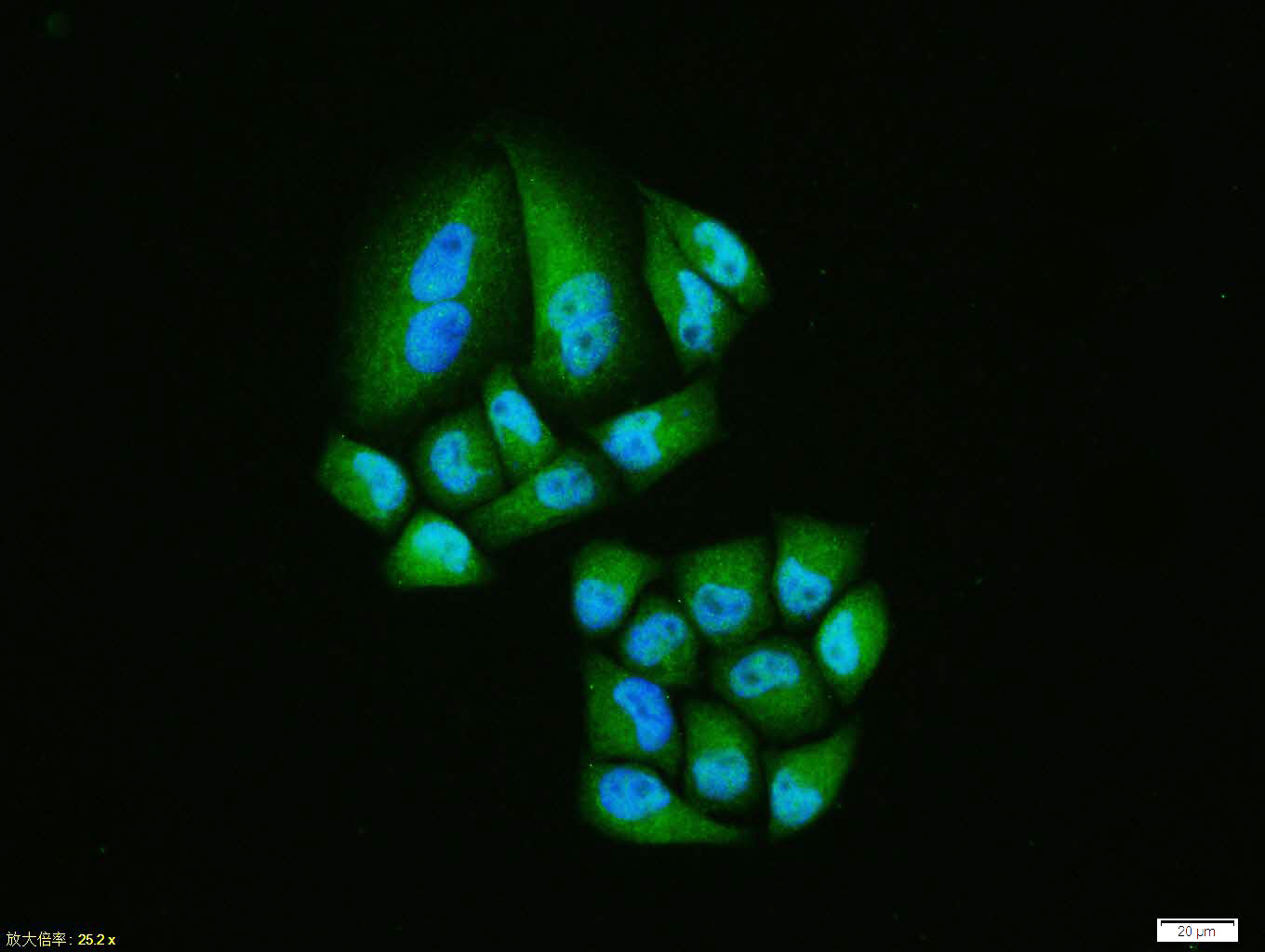
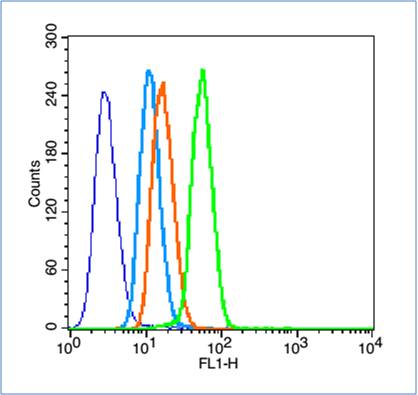
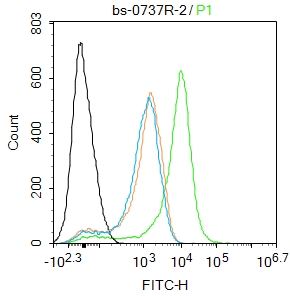


 +86 571 56623320
+86 571 56623320
 +86 18668110335
+86 18668110335

